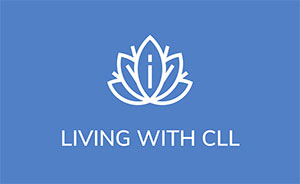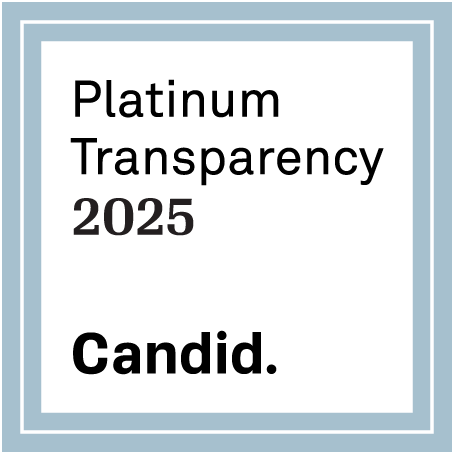By Peter Titlebaum, EdD – Patient
When diagnosed with chronic lymphocytic leukemia (CLL) and told you have cancer, there should be a pause to give the patient an opportunity to process that information. However, many CLL patients report that the next line from many doctors’ mouths is, “But it’s a good kind of cancer.”
Cancer is never good, and we need to understand that from the patient’s perspective. However, if you have to have cancer, which is traumatic enough, then yes, you are fortunate to have a cancer that is treatable.
This is where we need a warning label about CLL. The information you are about to hear is counterintuitive to everything you know about taking preparatory action. This is an important differential compared to virtually all other cancers.
The reason why we stress this point is because you are going to have to communicate to loved ones that it is best practice to do nothing right away and assure them you know what you’re doing even if it doesn’t make sense to them. It’s a stereotype, but it’s really hard especially for men, who have a tendency to try to fix things. If you had different kinds of cancer, you would seek treatment, and that probably would be a great strategy, just not with CLL.
While it is true that if you do have cancer, CLL is preferable, the newly diagnosed patient’s mind is already reeling from hearing that they have the big C. If you are lucky enough to be told you are not ready for treatment, it still plays with the minds of the patient and the care partner.
CLL is a different kind of cancer. It is typically best practice not to treat it at the time of diagnosis, unless it is at an advanced stage. Often, it’s discovered unexpectedly, typically during a routine physical exam when symptoms – such as elevated white blood cell count, fatigue, and swollen lymph glands – are minimal and can be mistaken for other conditions. This can be challenging to acknowledge personally, and also to tell loved ones.
Let me explain. There is a 30% chance you will never need treatment. This is one of the reasons they don’t want to treat you immediately because you may not require treatment at all and studies have shown that early intervention with treatment does not improve survival outcomes. There is no good reason to put drugs into patients’ bodies prematurely which can expose people to unnecessary side effects without clear benefits. Not to mention the expense and getting little in return for your investment.
Most of us CLL patients are told we are not yet ready for treatment at the time of diagnosis, but rather it is time for “Watch and Wait” or, as some patients express it, “Watch and Worry”. This means every 3 to 6 months, you will have a blood check to see how you’re doing and to see if your white blood cell count and other symptoms warrant beginning treatment.
This can be stressful for all involved. Education is important to the CLL patient and their care partner, as it is easy to feel lost at this point. Who in their right mind wants to be told you have cancer but we don’t need to treat it just yet? The anxiety of going through periodic testing is a major stressor.
This is why I am writing this article. My belief is that “Watch and Wait” needs to be rebranded. Many patients equate this to waiting for a bus that is going to run them over. If you are smart, this is a wake-up call to get yourself in better physical and mental shape before you start treatment. This gives the CLL patient some things that they can do that can have a positive effect. Developing good nutritional habits can help. Check out the Y, which offers a free three-month, group-based exercise program called LiveStrong that will help you prepare in advance. As will joining a CLL support group where you will find people like yourself who are new to this condition, as well as those who have been dealing with the disease for many years. Their insights are invaluable, as experience is a great teacher.
All CLL patients are hoping they are in the 30% that will never need treatment. However, in reality, 70% of all CLL patients will need treatment. Let me tell you the positive side of waiting.
If I were to approach you and say I could give you a penny, and I would double it every day for 31 days or give you $1 million dollars, which would you choose? Many people would take the million in a heartbeat, but that would be shortsighted. After 31 days, you’d have over $10 million with a penny and compounding.
What many people don’t realize is the value of compounding; you might be thinking, “What does this have to do with CLL?” For every day, week, month, or year, the CLL patient is benefiting from all the work the medical community is doing on their behalf.
Currently, there are over 1,000 studies and clinical trials going on involving CLL. What that means to the patient is that there will be new methods, drugs, and techniques, so the longer you can wait for treatment, the more options you will have when and if the time comes.
Two large nonprofits and CLL Society together have invested over $94 million into CLL research over the last 10 years, with CLL Society beginning their research funding in 2022. Just knowing this may give you a better understanding about why it is a positive thing that we don’t treat your CLL just yet.
I was diagnosed with CLL at the end of 2018. I was at the zero level which meant I was waiting and watching until 2021, when I went through a year of treatment. At this point, in 2025, I get checked quarterly and currently am at 1% CLL in my body.
As this is a chronic disease, this does not mean I will never need treatment again, but if I do, I take comfort in knowing all the work that’s being done on my behalf and all CLL patients. And if I do need treatment in the future, I know that there will be a variety of new drugs available.
Please embrace the fact you have the opportunity to Wait and Watch, make the most of the time! No other cancer patient is that lucky, it is good to trust the wisdom of not rushing into treatment prematurely!
Peter Titlebaum, EdD, is a college professor at the University of Dayton. He is 65 years old, an avid cyclist and was diagnosed with chronic lymphocytic leukemia in 2018.



